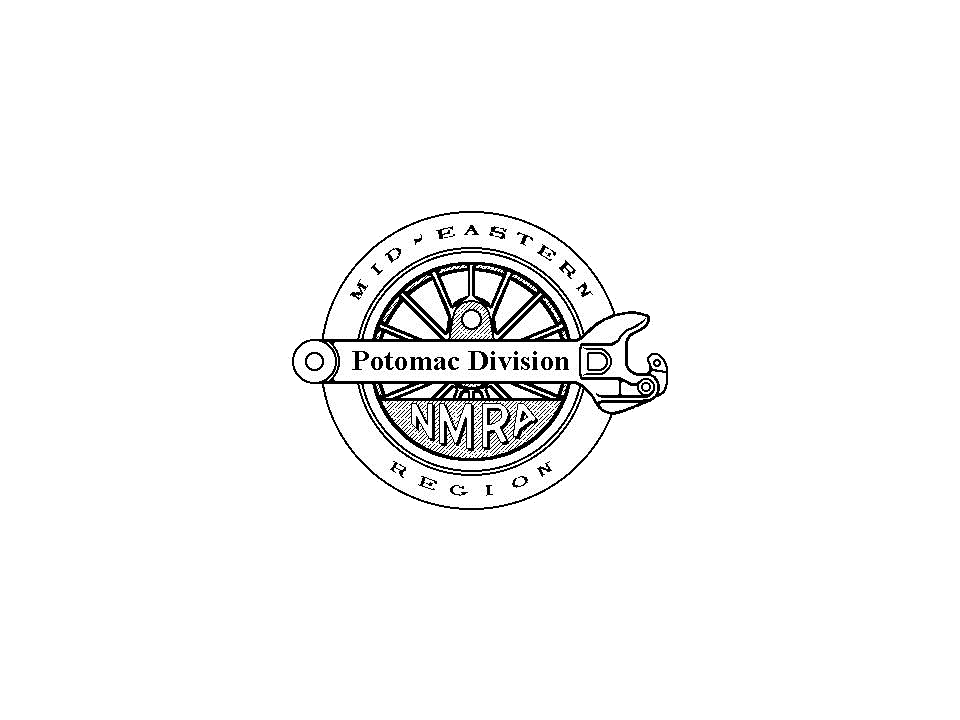A TRIP BACK IN TIME
After
two successive postponements because of our exceptional Washington
weather, I finally made it up to see Stan Knotts’ HO scale Royal Oak
and Southern Railroad in Laytonsville, MD, and a very well done
railroad it is. Representing a free lanced model with no particular
prototype in mind, it fills a 17 foot by 25 foot basement room and is
composed of a continuously operating two level standard gauge line with
a duck under stone arch bridge over the main entrance aisle, and a
narrow gauge subsidiary that winds around a mountain in the middle of
the room to a timber/logging area at the top. A 10 foot by 12 foot
extension is under construction in an adjacent room that also doubles
as a work shop. The layout is operated with NCE DCC radio controls;
some of the locomotives are currently equipped with sound, and
eventually all of them will be. The turnouts are operated by DCC
stationary decoders powering Tortoise or Switch Master switch machines,
and all turnout control panels have been removed. The scenery is
traditional Hydrocal and Sculptamold over a cardboard substructure with
much of it carved out as rocks.
Stan
began building the railroad in the early 1990’s but, like so many model
railroaders, didn’t really get rolling on it until he retired. Although
not intended to be an explicit era or location, the general concept
reflects the heavily industrialized area of Western Pennsylvania in the
late 1930’s; locomotives are strictly steam of varied sizes (not a
diesel in sight), the largest one being a USRA Heavy 2-8-2; the rolling
stock is from the same time frame – truss rod box cars and billboard
reefers (I could write a whole Ancient Modeler article using his
railroad equipment alone), and while no specific towns are identified,
Uniontown seems to be more prominently mentioned in the signage on the
buildings than any other. Many of the industries are named for friends
and family, something it would seem that we all enjoy doing. There are
audio CD’s from a company called Fantastonic Engineering installed in
various places under the layout to provide industry appropriate sound
effects, and a couple of those Miller Engineering lighted and animated
signs around as well. He even went so far as to start up a Railroad
Industry SIG which he managed for 20 years
Every
modeler has their “thing” (the part of the hobby they like to do best)
and Stan’s is building structures – lots of them - in various shapes
and sizes that include kits, kit bashed, scratch built, anything that
meets a need on the railroad, all of which are weathered to some
degree. The primary rationale for the new extension is to provide
additional building sites for more structures, having run out of room
for them in the original section. There are even some structures from
his father’s Troll and Elfin Railroad, which some of us old timers can
remember from before there was a Potomac Division, that he recycled for
their sentimental value. The entire railroad and its scenery are as
finished as a railroad can get, and the whole thing appears to me to
have an “industrial cast” about it, for lack of a better term; a vague
sort of soft gray layer of coal dust, or soot over everything. If this
is the weathering he referred to, it’s very effectively done, and the
somewhat subdued layout overhead lighting, which some might feel could
be a bit brighter, actually enhances the illusion even more.
Stan
Knotts is one of those modelers with a sharp eye for details as well as
the ability to pick up on the little things and apply them to his
railroad. Examples of this are everywhere: The small steam powered boat
in the sawmill pond to round up the logs for cutting and stacking; the
old fashion single strand steel cable guard rail along the side of a
road; the canal in the (“Uniontown,” maybe?) section with its model
lock at the end; the employment of period trucks (mostly Mack’s
by Jordan Miniatures) for shipping everything that doesn’t travel by
rail; the light gray atmosphere that permeates the entire layout; small
features that may not seem that significant by themselves, but when you
put them all together they create the impression, albeit in 1:87 scale,
that you really are in Western Pennsylvania just before the onset
of WW II. It’s one of those talents that are nowhere near as easy to
implement as they often appear to be, not unlike playing the cello.
Bob Rosenberg

